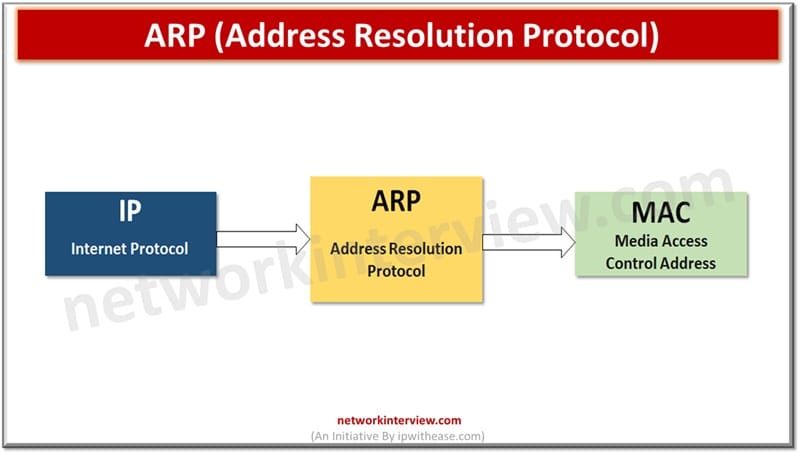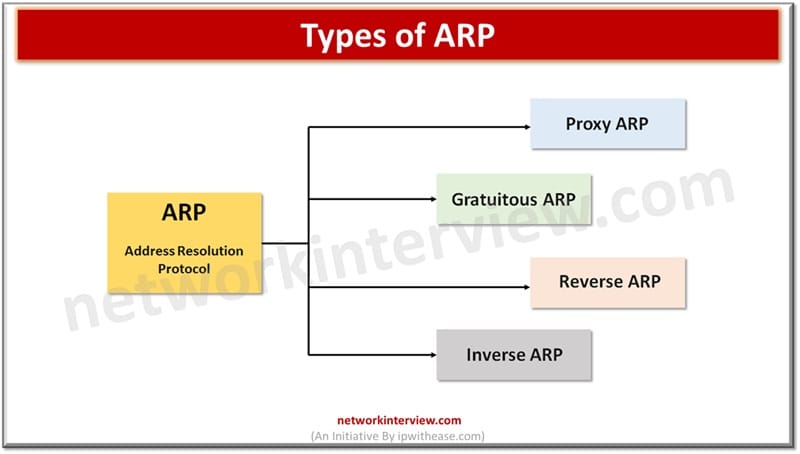
What are the 4 types of ARP? Address Resolution Protocol
All computer systems and programs use human readable and understandable IP addresses for communication across the network; however, actual communication between systems takes over the MAC or physical address of the device derived at layer 2 data-link layer of OSI model.
The systems use Address resolution protocol to get MAC addresses for the purpose of communication.
ARP is one of the most essential protocols in the OSI model stack which finds the physical address of hardware known as MAC or media access control address.
ARP protocols are of four types namely proxy ARP, Gratuitous ARP, Reverse ARP (RARP) and Inverse ARP.
In this article we will learn more in detail about Address resolution protocols (ARP) types, their purposes, and characteristics.
What is ARP (Address Resolution Protocol)
ARP protocol connects fixed physical machine address or ARP address to dynamic IP address within a local area network and popularly known as Address resolution protocol which operates at data link layer (Layer 2) of OSI model. The ARP or Mac address is 48-bit long in length.
The MAC address establishes connection between two physical devices for data transfer. The internet protocol (IP) address defined at the network layer is responsible for forwarding of data packets hence ARP works between IP and MAC.
Advantages and Disadvantages of ARP
Advantages
- Mapping between physical device address and IP address to facilitate communication
- Reduction in constant broadcasts which improves network performance
- Dynamic and auto updates in ARP table cache
- Universally supported across operating systems
Disadvantages
- Denial of service and spoofing attacks prone and vulnerable
- Due to its broadcast traffic contributes to network congestion
- Limited capacity of ARP table cache could result in performance issues
- Not suited for large networks due to overhead associated with ARP lookups

Types of ARP
Address resolution protocol (ARP) is of four types
Proxy ARP
Proxy as the name suggests operates on behalf of the system and replies to ARP requests. If a request is sent outside the network, then the router acts as a gateway for packet transmission to other networks and their destinations. Proxy ARP enables devices which are separated into network segments connected with a router on an IP network. The proxy router resides between local area networks and responds with its MAC address. The sender device gets the MAC address of the proxy router and data packet is sent to the proxy router which in turn sends data packet to its destination.
Gratuitous ARP
When the computer boots up it broadcasts its MAC address to the entire network. It is an ARP request from the host to verify for a duplicate IP address. This is mostly used to update ARP tables of other devices and validates that the IP address utilized by the host is the unique one or duplicate. It is also used in updating ARP mapping tables and switch port MAC address tables.
Reverse ARP (RARP)
A new machine when it needs an IP address for its use sends an RARP broadcast which contains its own MAC address, RARP-server is responsible to reply to this kind of broadcast and attempts to find out entry of IP to corresponding MAC address in RARP table. RARP is used and supported by LAN technologies such as Ethernet, Token Ring and Fiber Distributed Data Interface (FDDI). RARP is not used in today’s networks as we have more advanced protocols such as BOOTP (Bootstrap Protocol) and DHCP (Dynamic Host Configuration Protocol) available now.
Inverse ARP
It is the reverse of ARP as it identifies the corresponding IP address from MAC address. It is used primarily in device configuration. Inverse ARP is enabled by default for ATM (Asynchronous Transfer Mode) networks. It uses a layer-3 IP address from layer-2 address.
Tag:Protocols



